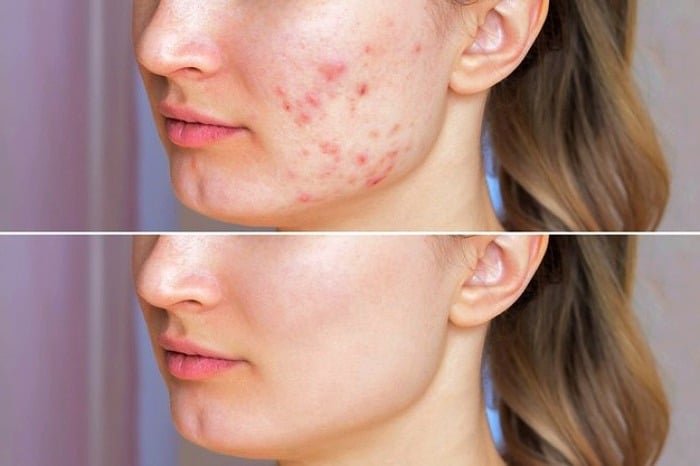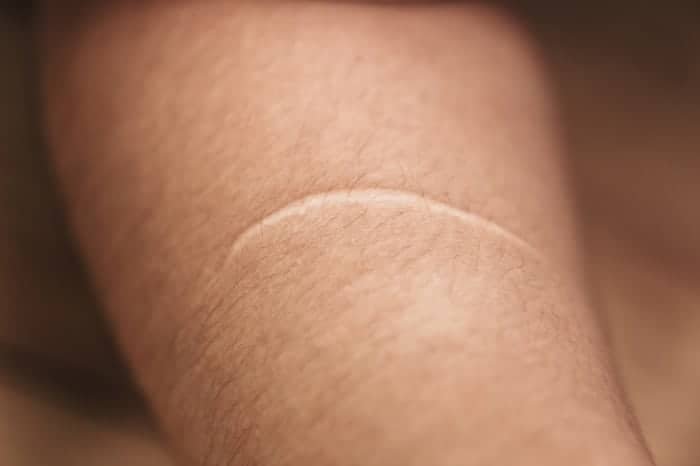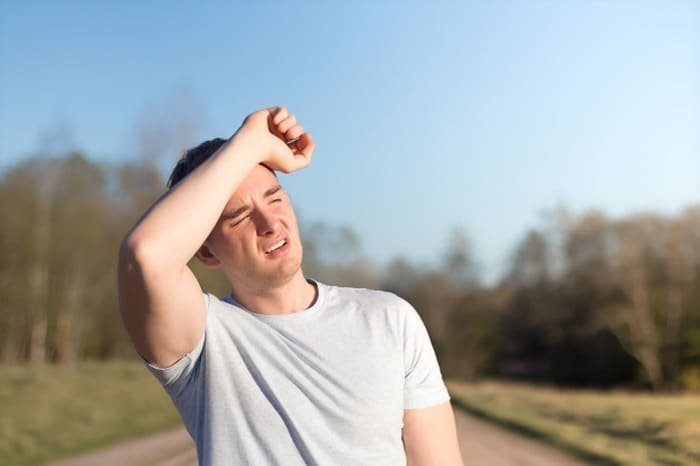Persian clayand the benefits and side effects of its excessive use
Persian clay is one of the minerals mentioned in traditional medicine, belonging to the group of drugs derived from minerals. Due to its natural properties, it is the best choice for maintaining the health, vitality, and beauty of hair, as well as providing many benefits for the skin. In this section, concerning health and wellnessSelMagzWe have listed all the benefits of Persian clay for skin and hair along with its application methods.
What is Persian clay?
In traditional medicine, there is a term known as clay. Nishaburi or Khorasani soil, known as Persian clay, is one of the main types of clay used, known for its white color, pleasant smell, good taste, and slightly salty nature. Other types of clay used for cleansing include white clay, green clay (soothing for the scalp and eliminating lice), and yellow clay (for medicinal uses).
Benefits of Persian clay for hair
Persian clay has many benefits for hair, including:
Repairing damaged hair
Traditional healers believe that Persian clay has healing properties. If the hair shaft is damaged, you can use it because Persian clay has restorative effects and can repair much of the damage done to the hair shaft. Restore your hair’s beauty with this clay. To repair hair after damage, take 2 to 3 tablespoons of this clay, put it in a bowl, gradually add water, and mix slowly until it thickens into a paste; apply this mixture to your scalp for 20 to 30 minutes and then wash it out gently.
Eliminating split ends
A mixture of Persian clay and marshmallow root soaked in water is effective for treating split ends and increasing scalp softness.Marshmallow rootSoak it in water for a day and, after straining, mix this water with Persian clay to use for washing your hair.
BoostingHair Growth
Washing your hair with Persian clayhelps strengthen hairand increases hair growth speed. For better hair growth, use Persian clay. Take 2 to 3 tablespoons of this clay, put it in a bowl, gradually add water, and mix slowly until it thickens into a paste; apply this mixture to your scalp for 20 to 30 minutes and then wash it out gently.
Treating acne anditchy scalpFor treating acne, scalp itching, and so on, mix Persian clay with
yogurtand gradually add water to achieve a smooth and appropriate paste.Removing dirt and oil from hair
Washing hair with Persian clay removes dirt and oil from the hair and scalp. Take 2 to 3 tablespoons of this clay, put it in a bowl, gradually add water, and mix slowly until it thickens into a paste; apply this mixture to your scalp for 20 to 30 minutes and then wash it out gently. After washing with Persian clay, wash your hair with shampoo, especially those made from botanical ingredients.
Benefits of Persian clay for the face
Persian clay is not only beneficial for hair but also improves skin health.
Exfoliating the face
Using Persian clay cleans dead skin cells from the top layer of the skin and opens up the pores. To prepare a Persian clay mask for face exfoliation, mix 1 tablespoon of Persian clay with one tablespoon
of rose waterthen wash your face and dry it with a towel, apply this mixture to your face, and gentlymassagefor about 5 minutes, then rinse your face withwarm waterWash off. Repeat this treatment 2-3 times a week.Skin brightness
Persian clay gives instant brightness to your face by removing impurities and opening pores. For skin brightness, use Persian clay this way.
Mix 1 tablespoon of Persian clay with 1 tablespoon
of tomato juiceand 1 tablespoon of sandalwood powder and a quarter tablespoon of turmeric powder. After washing and drying your face, apply this paste to your face like a face pack and let it dry for about 15 minutes, then wash your face. Repeat this treatment once or twice a week.Regulating oil production
Persian clay helps cleanse the skin and regulate oil production for oily and dry skin.
If
you have oily skinMix 1 tablespoon of Persian clay with one and a half tablespoons of water and after washing and drying your face, apply this paste to your face like a face pack and let it dry for about 15 minutes, then wash your face. Repeat this treatment once or twice a week.If you have dry skin, mix 1 tablespoon of Persian clay with one and a half tablespoons of
kashkand after washing and drying your face, apply this paste to your face, let it dry for about 15 minutes, then wash your face. Repeat this treatment once or twice a week.Treating skin spots
You can use Persian clay to get rid of skin spots, acne scars, and skin pigmentation. To lighten spots and scars from acne, mix 1 tablespoon of Persian clay with 2 tablespoons
of potato juiceAfter washing and drying your face, apply this paste to your face, let it dry for about 15 minutes, then wash your face. Repeat this treatment once or twice a week.Treating acne
Persian clay treats acne due to its oil-absorbing properties, pulling out oil and impurities from the skin, preventing further breakouts by keeping the skin healthy. To control acne, mix 1 tablespoon of Persian clay, 1 tablespoon of neem powder, 2 tablespoons of rose water, and 4 to 5 drops of lemon juice. After washing and drying your face, apply this paste to your face, let it dry for about 15 minutes, then wash your face. Repeat this treatment once or twice a week.
Skin whitening

If you have sunburn, you can relieve heavy tanning with this method. To eliminate
sunburnmix 1 tablespoon of Persian clay with 1 tablespoon of mashed papaya, wash and dry your face, then apply this paste to your face and let it dry for about 15 minutes, then wash your face. Repeat this treatment two to three times a week.Getting rid of blackheads and whiteheads
Get rid of blackheads and whiteheads using Persian clay. To eliminate blackheads and whiteheads, mix 2 crushed
almondswith 1 tablespoon of Persian clay and 1 and a half tablespoons of rose water. After washing and drying your face, apply this paste to your face, gently massage your face with the Persian clay mixture for about 5 minutes and then wash your face. Repeat this treatment two to three times a week.Fading old scars and burns
To lessen the appearance of old scars and burns, use Persian clay. To lighten the appearance of scars and old burns, mix 1 tablespoon of Persian clay with 1 tablespoon of
carrot pulp
and 1 teaspoon ofolive oilAfter washing and drying your face, apply this paste to your face and let it sit for 15 minutes, then wash your face. Repeat this treatment twice a week.Cleaning the skinFor exfoliating and cleaning the skin and removing dirt, you can use Persian clay as a mild cleanser for having a smooth and even complexion. To clean the skin, mix 1 cup of oatmeal, 1 cup of neem powder, a quarter cup of white sandalwood, 1 tablespoon of turmeric powder, 1 tablespoon of chickpea flour, and 1 cup of Persian clay. Replace this cleansing powder for

regular soaps
and gently scrub your body with this powder for a minute or two before washing it off with warm water. Do this treatment daily or every other day.Improving blood circulationPersian clay promotes increased blood circulation through skin stimulation. To improve blood flow, mix 2 tablespoons of Persian clay with 1 tablespoon of water, apply the Persian clay paste to any desired part of your body, leave it for 15 minutes, and then clean it with a towel or cloth. Do this treatment daily.
Relieving heat stroke
Persian clay alleviates heat stroke due to its cooling properties. To relieve heat stroke, mix 3 tablespoons of Persian clay with 2 tablespoons of cold water and apply this paste to your body, leaving it for 15-20 minutes until it dries, then wash it off with warm water and repeat this treatment 2-3 times a week.
Relieving pain
For easing menstrual cramps,

insect bites
, and burns, you can use Persian clay as a cold or warm compress. To use Persian clay as a warm compress, mix 2 tablespoons of Persian clay with 1 tablespoon of warm water, apply it to the affected area, and let it sit for 15 minutes before removing it with a hot towel. Repeat this treatment as needed.To use Persian clay as a cold compress, mix 2 tablespoons of Persian clay with 1 tablespoon of cold water, apply it to the affected area, and let it sit for 15 minutes. Then remove it with a damp towel. Repeat this treatment as needed.Side effects of excessive use of Persian clay
In some individuals, using Persian clay can result in side effects such as
skin dryness
or skin wounds and lesions.If Persian clay is applied excessively to the head, it becomes heavy when wet and can cause strain on hair strands and loosen hair roots, leading to hair loss. People experiencinghair loss
should use Persian clay every 10 days or every two weeks and should wash their hair gently after using it.Important tipsDuring pregnancy,
do not use Persian clay.
- Do not use fake Persian clay, and always obtain Persian clay from trusted and reliable sources.Red clay or Armenian clay is one of the clays used in traditional medicine for treatments, which are used forvaricose veins
- and pain relief.
- When using Persian clay as a mask, do not apply it around your eyes.Test a small amount of Persian clay on your hair before using it in larger amounts.If you experience any adverse effect from using Persian clay, stop using it immediately.
- Healers do not recommend Persian clay for people with long hair.
- Quickly washing hair with Persian clay increases the chances of pulling and loosening hair roots.
- Treating acne
- Treating acne with Persian clay
- Old scars







